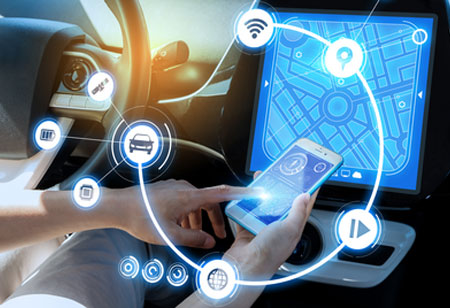THANK YOU FOR SUBSCRIBING
The Role of HMI Systems in Automobile Safety
The introduction of upgraded processors, microsensors, and memory components are set to bring in more advanced, completely autonomous, and efficiently predictable safety measurements.

By
Apac CIOOutlook | Friday, June 07, 2019
Stay ahead of the industry with exclusive feature stories on the top companies, expert insights and the latest news delivered straight to your inbox. Subscribe today.
FREMONT, CA: As technological development revolutionizes the automobile market ecosystem, the constant fear of unknown adverse effects of new trends has engulfed the motor leaders and security experts. The introduction of upgraded processors, microsensors, and memory components are set to bring in more advanced, completely autonomous, and efficiently predictable safety measurements. The improved automobile subsystems utilize the concept of connectivity and networking technology to enhance the driver’s safety.
The influx of synthetic devices into the main framework of an automobile needs to be administered by an organic source. The inclusion of human-machine interfaces (HMI) in the automotive cabin provides an invisible link between a human and an android. The HMI advancements have come a long way from controlling the vehicle's audio system to initiating an engine with the push of a button. The cruse controlling ability of HMI technology has added to the embedded safety devices.
The HMI hardware and software have extended outside the automotive industry into sectors where minute functional failure can cause a fatal effect to human health or can damage the users’ property. To restrict the machinery malfunction HMI technology is being undertaken by microwaves manufacturers, aircraft manufacturers, and nuclear power plants. The prime motto of any automobile industry is a seamless consumer experience with zero risks. The physical liabilities of vehicles have always been unsettling the automobile industry and with the inclusion of more and more digital machinery, the risk has elevated even further. The new technology should not only satisfy the consumer's demand but also provide the driver with a functional safety environment. There are two aspects to achieve operational safety—preventive measures and detection of automotive safety.
Preventive Measures: A preventive measure ensures the elimination of errors and system failures for obtaining the driver's safety. Hence, improvement in the design and renovation of the exterior aspect plays a critical role in reducing or eliminating systematic failures during the developmental stage. Incorrect addition or subtraction of specified inbuilt systems and faulty implementation of concept ideas can intensify the risk and diminish the quality of preventive measurements.
Detection: The other set of problems include the inability to detect mechanical failures where the breakdown occurs during the assembly lines or production stages, and the negligence of workers provides to be harmful. Random hardware defects led by the fluctuation of temperature, pressure, or radiation can cause a microarray of product problems. The nature of such failures can be temporary or permanent base on the extent of deviation from its theoretical measurements.





